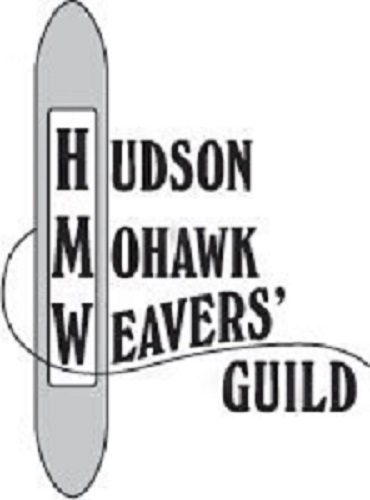Many new weavers experience lines in their cloth caused by changes in tension when the warp is advanced for more weaving space. I thought some of you might benefit from some helpful suggestions gleaned from the literature and my own experience.
- Jisp: (origin unknown) Streak in the fabric due to uneven beating of the weft. Synonym: Shire.
- Shire: (in M.E. thin and scanty) The same as jisp.
from Zielinski. Encyclopedia of Hand-Weaving. c. 1959.
Jisp lines are most obvious in plain weave, twill and sometimes in other techniques. There are several ways to avoid them.
Remember, the best weaving space (in most looms) is the center third of the space between the breast beam and the beater/reed. Do not work too close to the breast beam as the beater strikes the front of the loom and cannot force the weft into the web. Working too close to the reed prevents the beater from developing enough speed to exert sufficient pressure at the fell line. Also, working too close to the reed forces the shuttle to further compress the previously-woven wefts as the shuttle is forced through the ever diminishing shed.
As you weaver towards the beater, the tension on the warp increases, as the warp threads bend up and down with the changing sheds. This tension is greater than when warp was first advanced. When the warp beam is released, and the cloth advanced, the new tension will be tighter or looser as you crank up the cloth beam. Usually it is more loose, as you try to equal the tension as it was before you started to weave the last time you advanced. Thus, your beating force should be adjusted to compensate for the different tension.
One way to equalize the tension is to release the cloth beam one (and only one) notch as you get close to the one third space limit. Then, when the close is advanced, the new tension will be more like that of the previous shed. It is always a good policy to release the cloth beam before the brake, if the warp beam has a dog-and-rachet brake system. If tension is tight when brake is released the warp beam can over-spin, you have to go to the back and tighten the warp beam, because it is too loose for the fell line to locate within the center third of the weaving space.
In twill and pattern weaving, especially summer & winter or spot (Bronson) weaves, always advance the warp when a pattern unit is complete. The change in pattern helps minimize the jisp line.
Warp tension is important, too. If tension is too low, the force of the beat is absorbed throughout the warp, instead of at the fell line. If too tight, the shafts cannot open the shed fully, and the beater cannot force the weft against the previous pick.
And always, after advancing the warp, give the fell line one whack (well, not too hard) before you throw the shuttle again.
Advance the warp frequently. Even within the one-third space limit, some looms, especially table looms, beat down on the warp, rather than nearly perpendicular. Advancing every 2.5" to 3" minimizes the change in warp tension on most looms.
Yes, you have to be a bit of a mechanic to be a good weaver. I hope these suggestions help you with your weaving.
...Gene E. Valk
P.S. The more you weave, the more uniform your beating and tension become and the less problem you'll have with jisp lines.
Note: The above, originally published in the Tryon Weavers' Guild Newsletter (May '98), appeared in the January '99 HMWG newsletter with permission from the author. Thank you Gene for sharing your "words of wisdom" with us all.
Gene Valk, until her passing in July of 2008, continued to offer classes at Weefhuis Studio in Gloversville, appeared as a guest lecturer, contributed articles for periodicals such as Handwoven and had been a member of HMWG for many years (as you can tell - her guild number was 066).

